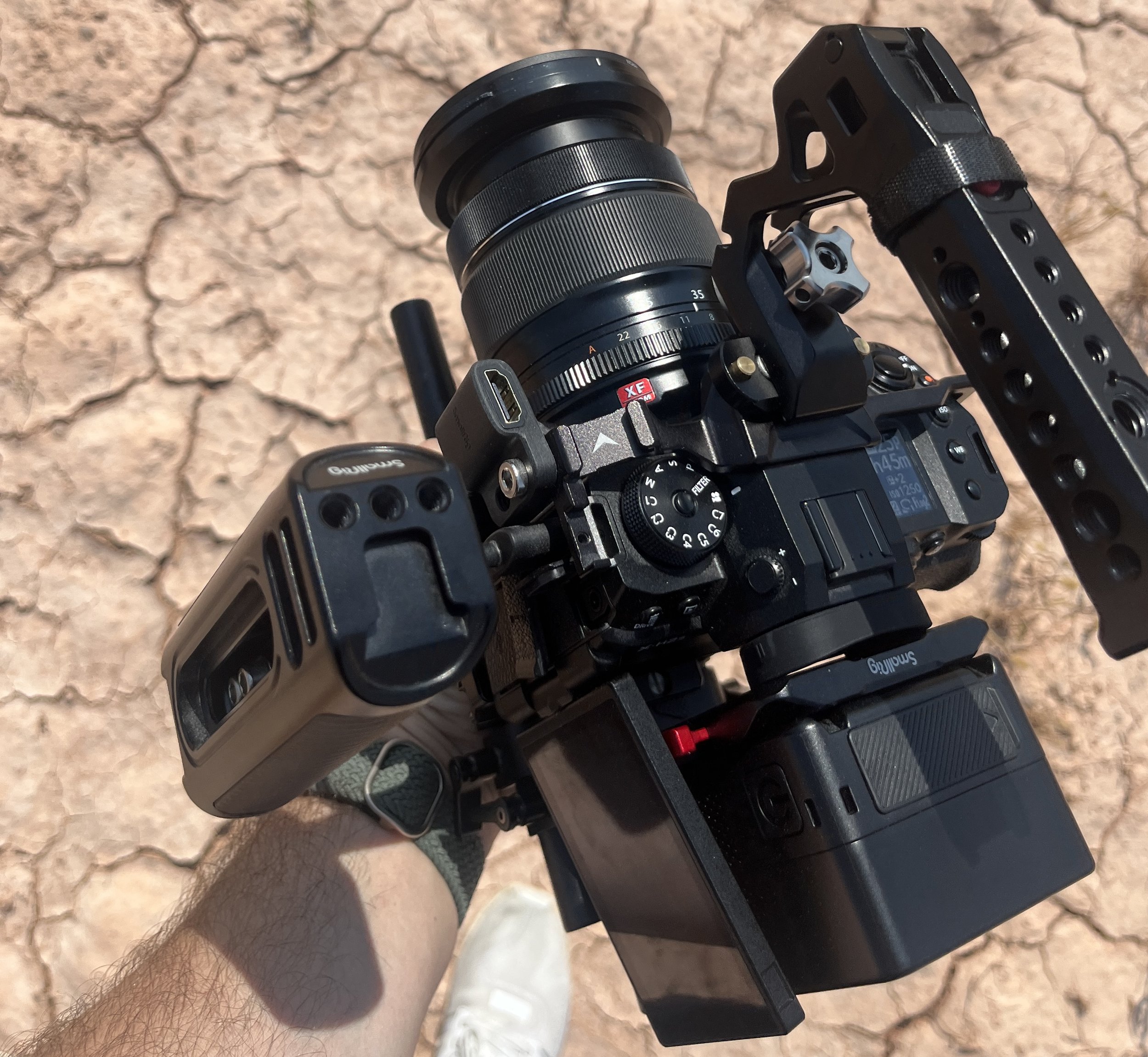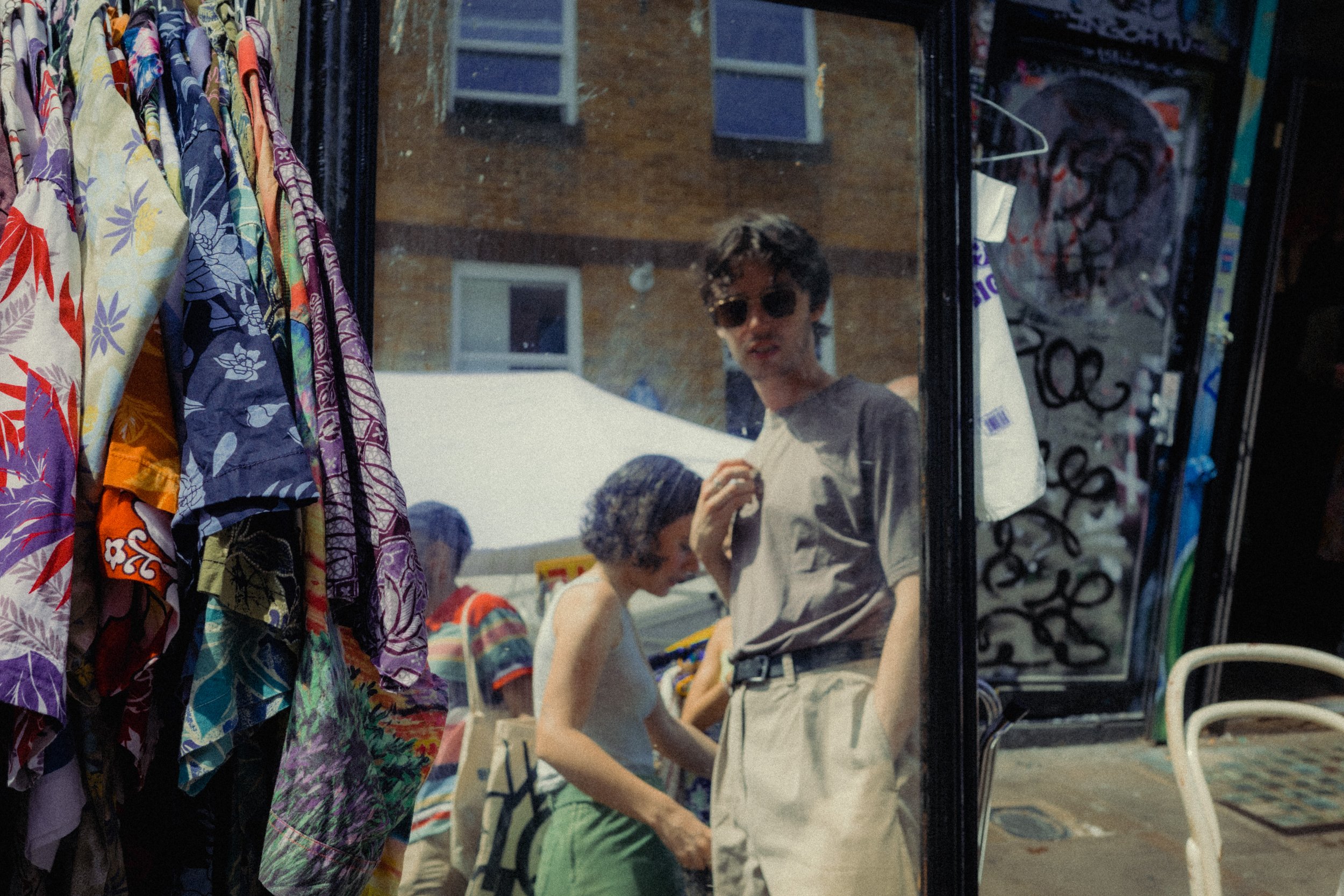A Guide to shooting Street Photography at Night
Street Photography at night time can be difficult, especially for those starting out. It took me years before I was comfortable capturing street photos in the evening. So in this article I’m going to share some advice and tips to help those of you who want to shoot at night too.
Gear for Street Photography at Night
First up let's talk about gear. You’re going to want to use faster lenses (lenses with lower F stop values) while shooting at night. The faster your lens is, the more light it will let in, which is exactly what you need when shooting after the sun has gone down.
With that said, you really don’t need an expensive prime lens to shoot at night. I often shoot with the Fujifilm’s f2 primes or even the Sigma 18-50 f2.8 works well too.
Also worth noting that you should try and set your aperture wide open - so if it's an f1.4 lens, shoot at f1.4 , if it's f2 set it at f2 and so on. As I said earlier, the wider your aperture is, the more light will be let into your lens.
As for which focal length to shoot with at night, I’d say just experiment. I like to use the Fuji 56mm 1.2 or the 90mm to get more creative with abstract compositions whereas I use wider lenses like the 16mm or 23m to capture more traditional street photos of people in interesting locations.
Night Street Photography Settings
When it comes to shooting at night there's a couple settings to be careful of.
Firstly, shutter speed. Unless you want to bring motion blur into your photos for creative reasons, set your shutter speed at double your focal length. So if you have a 24mm lens set a shutter speed of at least 1/48 and above.
I tend to set 1/60 so my minimum shutter speed however, if I want to capture blur then I will shoot at around 1/30.
Next up ISO. Don't be afraid to push your ISO higher when shooting at night. ISO refers to the sensitivity of your sensor so for darker scenes you’re going to want a higher ISO setting.
On Fujifilm cameras you can set an upper limit for the ISO - I tend to keep that at around 3200 for most of my street photography at night or go up to 6400 if I'm shooting in a really dark scene.
It’s also worth remembering that the higher you push your ISO setting the more noise you will bring into your photos which in turn will make them more difficult to edit in post too.
Finally exposure compensation. The exposure compensation setting is an easy and quick way to reduce or increase the exposure of the photo you are taking. While shooting at night I try to avoid blowing out my highlights as digital cameras tend to struggle with retrieving details out of highlights, but are very good at recovering details in shadows.
Therefore if I'm shooting scenes with bright lights, I will slightly under-expose my photo and recover the shadows in post.
One final thing when it comes to settings, always remember to shoot in Raw. When you shoot Raw you capture more data in the shadows and highlights compared to JPEGs, so when you edit the photo you have more room to bring up the shadows and edit the colours. Shooting RAW also allows you to set the white balance in post too.
Fishing Technique
A useful tip for street photography at night is to use the fishing technique.
In street photography the fishing technique is when you find a scene or composition you like and then wait patiently for the right subject to walk into frame.
I find this works really well at night as people tend to notice you less opposed to your waking up to your subject and taking a photo of them directly.
Get Creative and Stay Safe
The reason I love shooting at night is you get to be a little more creative than you can during the day. There's more interesting light, generally more interesting subjects and it's also easier to get creative with things like reflections, slower shutter speeds and colourful lights.
Your photos don’t have to be perfectly sharp or even in focus, I tend to find photos with motion blur or being slightly out of focus to be more interesting, especially for photos taken at night.
Side note - do stay safe, shooting at night can be a little more dangerous, I’d advise not using headphones, try going with a friend if you can and take a small bag with you to slip your camera into while walking around or if you feel unsafe.



























